Board game development on the example of Starcraft
The most important board game in the IT environment is most likely Starcraft.
When the computer version gained enough popularity, the guys from Blizzard shared their rights to the brand with the famous American publisher Fantasy Flight Games. In the topic - an overview of the factors that led to the success of the desktop version.
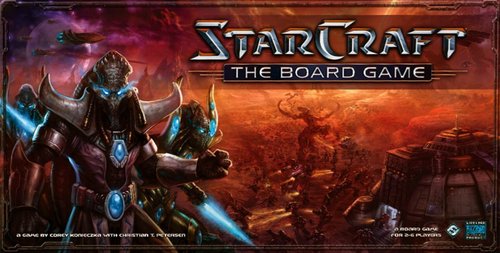
')
Among other things, the information will be useful to game developers who are interested in a simple and rather beautiful additional way to monetize through “porting” their game into physical form.
Inside the large and well-known box is a map of the galaxy, which is built from the planets every time at the beginning of the game, a bunch of units in the form of plastic figures (there is a whole line of the first Kraft for three races - 180 pieces), many different cards and chips: these are buildings, resource markers, orders, transports, workers and event maps.
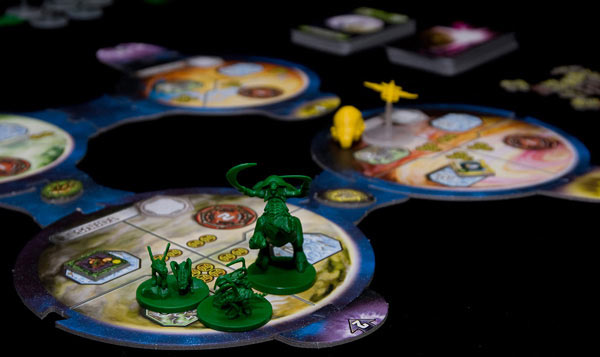
The planet and the zerg on it. Zergling'i two on a stand, as expected
All this together after the 40-minute rule-making becomes a well-coordinated strategy, where you can defeat the following options:
The gameplay looks like building in different places of different bases and units of zerg, protoss and terran, transporting troops around the map and fighting in an attempt to occupy profitable planets. In general, Starcraft, but from a different scale - namely, from the position of the most remarkable characters who gave you orders in the command center.
Every time a game is released on a hit that has already taken place, there are two options for events:
Judging by the imprint, Starcraft was lucky: firstly, the publisher was one of the best players on the FFG market, and, secondly, Blizzards planted a whole team of their own for joint actions, that is, consulting on the plot and design work.
Considering the high quality of both the original and the serious work on the board game, the creators chose the format of a huge box: any fans will buy it even for the most terrible money, so you can safely move to the top segment for the price. For the rest of the players who are not familiar with the computer version (I would like to see them), the boxed Starcraft remains a super-nice piece with very high detail of space battles.
The closest desktop competitors are the Sid Meier Civilization and Space Hulk based on Varhammer. Civilization is generally in a different genre and is designed for a different audience. Space Hulk is a tactic, not a strategy. Let's just say that those missions of the first Kraft where there is a base is “our” box, and those missions where there is no base is just the Hulk (and there is a lot better working out of the battles).
Desktop version audience:
Interestingly, both “higher” and “lower” in scale competition is very high: in tactical simulators, the battle is for realism and detail, and in global strategies - for balance. Starcraft took a free intermediate position, which immediately determined the success of sales for several years.
In terms of visual design - everything clearly repeats the original. The rules in the "iron" framework, absolutely recognizable figures of units and building chips (one-in-one of the game), a beautiful galaxy "in the spirit" and much more. Simply put, it just took and moved the visual range. The figures, by the way, turned out very well: and this, by the way, is another reason to sell the second and third boxes to the Koreans.

Figures
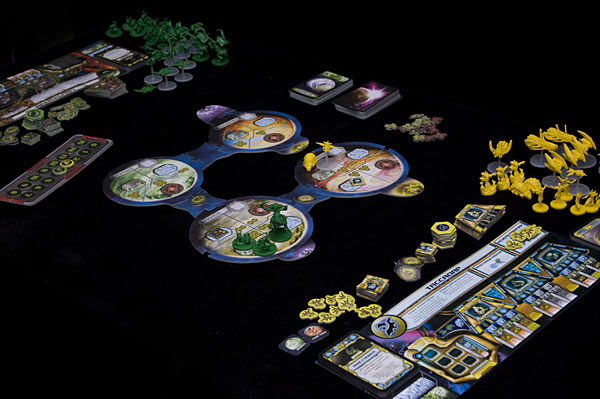
The game field (though there are usually more planets on it)

The command panel of the player, the screen of the rules
This was probably a nightmare for developers. On the one hand, the game was very recognizable - and on the other, it was completely different. The strategy is at the level of managing bases on different planets and transferring units along galactic routes. The fight, roughly speaking, is wall to wall, that is, the one who creates the best infrastructure and is able to properly think out the development of his faction wins.
Remember the voice of Terranov advisor “Receiving incoming transmission ... comlink established” ? This order came to the planet, which you, a wise commander, put there personally with your hand.

Orders: construction, mobilization, research
The most beautiful in the rules is not the fact that they “adapt” to the game using familiar units and buildings. And not a tree of upgrades, which makes it possible to use only a percentage of 10-20 technologies per game. The most beautiful is the birth of a galaxy and three-dimensional hyper-transitions between the planets. This part definitely did not come from Blizzard, but from FFG - evidence of the transfer of the game not “head on”, but thoughtfully, with new cool “fishes”. By the way, even now, when new competitors have appeared at the desktop version, Starcraft still remains “a game with cool figures and an amazing field.”
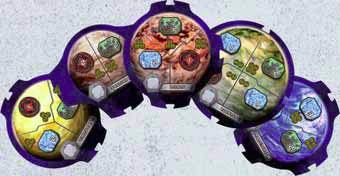
Planets

Planet in detail
The process of creating a galaxy is that at the beginning of each game you lay out your planet and can put a base on it. Then your opponent does the same (near). And so on. Planets can be connected both on a two-dimensional map, and in a terrible twist thanks to the Z-paths. These are portals that join the two planets in different parts of the map, personifying the three-dimensional arrangement of the systems. In practice, this means that you will be “fenced off” and go on the defensive only if you have one planet: in three-dimensional space, the best defense is the constant attack of the enemy.
The rules in the game were not just complicated, but very complex. Fortunately, for strategies of this level it is normal: they are not played at parties.
Another interesting thing is the interface defined by the rules. Game designers have maximally unloaded the player's attention: no need to memorize a bunch of minor things, you can focus on strategy. For example, if that edge of your Z-junction is captured by an adversary, your marker flips over to remind you that an invasion can go right from here. One glance at the field is like a glance at the right dashboard: you immediately see the whole strategic picture down to nuances.
And here are the rules themselves ( PDF, 5 Mb ) - note that the most necessary thing for experienced players - a guide to moves - is located right next to the desktop Warcraft advertisement.
Blizzard gives FFG rights, and FFG just sells them to different countries, choosing one of the market players. We translated Smart: in general, the translation turned out to be normal, but with some discrepancies of terms. By the way, I don’t think that the Russian version was particularly interesting for the representatives of Blizzard - rather, in terms of quality control, they were worried about European and Oriental languages. There it’s just that computer and board game translators probably had a common glossary of terms and names.
In the first place - for the shop window. For example, when opening a new point in Kiev on measurements, it turned out that many stop to look for him. Kraft's big box is the crystal dream of many lovers of nastolks: many people wonder what lies there at such a price.

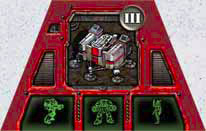
Buildings
In the second place, this game is sales for IT specialists. Starcraft with us in the form of a desktop does not enjoy fierce popularity, but has become almost a traditional gift to IT specialists. In the sense that when a fair-haired girl appears in the store with a question “what to give to a programmer guy,” there is a high probability that she will leave with this box. If you lift.
And, finally, the game found an amazing niche: it is often taken by young fathers of the 82-84th generation as a gift to their son, who is about five years old. For growth, apparently. In the meantime, you can play with friends, right?
The exact amount of FFG deductions Blizzards, of course, is difficult to call, but considering the peculiarities of the market, I think about $ 5 from the box.

Cards
Starcraft, Warcraft, Civilization, Age of Empires, Master of Orion (!), Doom, Metro-2033 and a bunch of other games came out in the desktop version and now stands in stores (by the way, there was a reverse process: for example, Magic the Gathering was ported to computer)
For the creator of a game, a movie or another hit, selling related products is a great way to earn extra money without difficulty (but, of course, not the main way to monetize).
If the topic is interesting, I can tell you about how the market of board games in Russia and Ukraine looks like - and how the procedure of “porting” your game to the table version is completely done.
I can also make a brief overview of the desktop based on the computer in the spirit of “what it is - how to play - how it was positioned - how popular it is - who sells mostly - whether the good thing turned out to be in the desktop version.”
UPD : continued about the development as a whole .
When the computer version gained enough popularity, the guys from Blizzard shared their rights to the brand with the famous American publisher Fantasy Flight Games. In the topic - an overview of the factors that led to the success of the desktop version.

')
Among other things, the information will be useful to game developers who are interested in a simple and rather beautiful additional way to monetize through “porting” their game into physical form.
How it looks and how it is played
Inside the large and well-known box is a map of the galaxy, which is built from the planets every time at the beginning of the game, a bunch of units in the form of plastic figures (there is a whole line of the first Kraft for three races - 180 pieces), many different cards and chips: these are buildings, resource markers, orders, transports, workers and event maps.

The planet and the zerg on it. Zergling'i two on a stand, as expected
All this together after the 40-minute rule-making becomes a well-coordinated strategy, where you can defeat the following options:
- Get 15 points (points are given for the captured planets) - winning a good position.
- Win on special conditions (for example, Kerrigan is nagging the analog of an ass personally to Overmind)
- Trite to remain the only survivor on the map (it turns out rarely, the capture of key planets is easier).
The gameplay looks like building in different places of different bases and units of zerg, protoss and terran, transporting troops around the map and fighting in an attempt to occupy profitable planets. In general, Starcraft, but from a different scale - namely, from the position of the most remarkable characters who gave you orders in the command center.
Positioning game
Every time a game is released on a hit that has already taken place, there are two options for events:
- To release the momentary crafts, which will be sold because of the name (so, by the way, it often happens with computer games based on movies)
- Or transfer the rights to a good publisher who squeezes the idea 100%.
Judging by the imprint, Starcraft was lucky: firstly, the publisher was one of the best players on the FFG market, and, secondly, Blizzards planted a whole team of their own for joint actions, that is, consulting on the plot and design work.
Considering the high quality of both the original and the serious work on the board game, the creators chose the format of a huge box: any fans will buy it even for the most terrible money, so you can safely move to the top segment for the price. For the rest of the players who are not familiar with the computer version (I would like to see them), the boxed Starcraft remains a super-nice piece with very high detail of space battles.
The closest desktop competitors are the Sid Meier Civilization and Space Hulk based on Varhammer. Civilization is generally in a different genre and is designed for a different audience. Space Hulk is a tactic, not a strategy. Let's just say that those missions of the first Kraft where there is a base is “our” box, and those missions where there is no base is just the Hulk (and there is a lot better working out of the battles).
Desktop version audience:
- Fans of a computer game (will buy because of the plot, that is, the action Blizzard)
- Lovers of cool strategies (do not depend on the brand, they were attracted by the FFG)
- Board geeks who will sort the game by bone
- Those who choose a gift for a guy (brand + entourage + box sizes)
Interestingly, both “higher” and “lower” in scale competition is very high: in tactical simulators, the battle is for realism and detail, and in global strategies - for balance. Starcraft took a free intermediate position, which immediately determined the success of sales for several years.
Design
In terms of visual design - everything clearly repeats the original. The rules in the "iron" framework, absolutely recognizable figures of units and building chips (one-in-one of the game), a beautiful galaxy "in the spirit" and much more. Simply put, it just took and moved the visual range. The figures, by the way, turned out very well: and this, by the way, is another reason to sell the second and third boxes to the Koreans.

Figures

The game field (though there are usually more planets on it)

The command panel of the player, the screen of the rules
rules
This was probably a nightmare for developers. On the one hand, the game was very recognizable - and on the other, it was completely different. The strategy is at the level of managing bases on different planets and transferring units along galactic routes. The fight, roughly speaking, is wall to wall, that is, the one who creates the best infrastructure and is able to properly think out the development of his faction wins.
Remember the voice of Terranov advisor “Receiving incoming transmission ... comlink established” ? This order came to the planet, which you, a wise commander, put there personally with your hand.

Orders: construction, mobilization, research
The most beautiful in the rules is not the fact that they “adapt” to the game using familiar units and buildings. And not a tree of upgrades, which makes it possible to use only a percentage of 10-20 technologies per game. The most beautiful is the birth of a galaxy and three-dimensional hyper-transitions between the planets. This part definitely did not come from Blizzard, but from FFG - evidence of the transfer of the game not “head on”, but thoughtfully, with new cool “fishes”. By the way, even now, when new competitors have appeared at the desktop version, Starcraft still remains “a game with cool figures and an amazing field.”

Planets

Planet in detail
The process of creating a galaxy is that at the beginning of each game you lay out your planet and can put a base on it. Then your opponent does the same (near). And so on. Planets can be connected both on a two-dimensional map, and in a terrible twist thanks to the Z-paths. These are portals that join the two planets in different parts of the map, personifying the three-dimensional arrangement of the systems. In practice, this means that you will be “fenced off” and go on the defensive only if you have one planet: in three-dimensional space, the best defense is the constant attack of the enemy.
The rules in the game were not just complicated, but very complex. Fortunately, for strategies of this level it is normal: they are not played at parties.
Another interesting thing is the interface defined by the rules. Game designers have maximally unloaded the player's attention: no need to memorize a bunch of minor things, you can focus on strategy. For example, if that edge of your Z-junction is captured by an adversary, your marker flips over to remind you that an invasion can go right from here. One glance at the field is like a glance at the right dashboard: you immediately see the whole strategic picture down to nuances.
And here are the rules themselves ( PDF, 5 Mb ) - note that the most necessary thing for experienced players - a guide to moves - is located right next to the desktop Warcraft advertisement.
Localization
Blizzard gives FFG rights, and FFG just sells them to different countries, choosing one of the market players. We translated Smart: in general, the translation turned out to be normal, but with some discrepancies of terms. By the way, I don’t think that the Russian version was particularly interesting for the representatives of Blizzard - rather, in terms of quality control, they were worried about European and Oriental languages. There it’s just that computer and board game translators probably had a common glossary of terms and names.
What is Starcraft store for?
In the first place - for the shop window. For example, when opening a new point in Kiev on measurements, it turned out that many stop to look for him. Kraft's big box is the crystal dream of many lovers of nastolks: many people wonder what lies there at such a price.


Buildings
In the second place, this game is sales for IT specialists. Starcraft with us in the form of a desktop does not enjoy fierce popularity, but has become almost a traditional gift to IT specialists. In the sense that when a fair-haired girl appears in the store with a question “what to give to a programmer guy,” there is a high probability that she will leave with this box. If you lift.
And, finally, the game found an amazing niche: it is often taken by young fathers of the 82-84th generation as a gift to their son, who is about five years old. For growth, apparently. In the meantime, you can play with friends, right?
How does the model of transfer of computer games to board work for them
- You make hit
- Give rights to the publisher
- The publisher offers you a variant of the game (in N iterations a good variant is obtained)
- The game goes to stores
- You receive deductions from each box sold.
The exact amount of FFG deductions Blizzards, of course, is difficult to call, but considering the peculiarities of the market, I think about $ 5 from the box.

Cards
How it works for us
- You make an interesting game
- Decide that she can have a desktop version (note, think it out yourself)
- Go to the publisher, that is, to us
- We help to determine the fact that "take off" and what is not
- You sell the license immediately or receive deductions from each printed box
- The game comes to stores
How profitable is it?
Starcraft, Warcraft, Civilization, Age of Empires, Master of Orion (!), Doom, Metro-2033 and a bunch of other games came out in the desktop version and now stands in stores (by the way, there was a reverse process: for example, Magic the Gathering was ported to computer)
For the creator of a game, a movie or another hit, selling related products is a great way to earn extra money without difficulty (but, of course, not the main way to monetize).
Continued?
If the topic is interesting, I can tell you about how the market of board games in Russia and Ukraine looks like - and how the procedure of “porting” your game to the table version is completely done.
I can also make a brief overview of the desktop based on the computer in the spirit of “what it is - how to play - how it was positioned - how popular it is - who sells mostly - whether the good thing turned out to be in the desktop version.”
UPD : continued about the development as a whole .
Source: https://habr.com/ru/post/111747/
All Articles